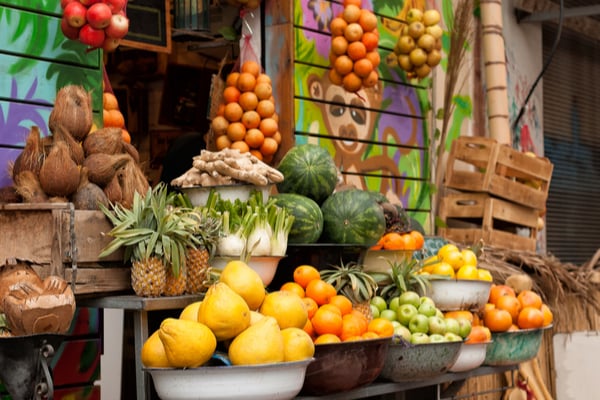Jewish wisdom is full of insightful comparisons between the Jewish People, and trees and fruit.
By Rabbi Ari Enkin, Rabbinic Director, United with Israel
This coming Monday is “Tu B’Shvat”, the fifteenth day of the Hebrew month of Shvat, known as the “New Year” for trees. There are actually four different “New Year’s” on the Jewish year with Rosh Hashana begin the most famous one, of course. The others are the first of Nissan, the first of Elul and the first of Tishrei, each for different reasons, beyond the scope of this article.
The sages designated Tu B’Shvat as the boundary between one year and another regarding certain agricultural laws. For example, fruit may not be eaten until a tree is three years old. The cut-off date for such calculation is Tu B’Shvat. So too, by Tu B’Shvat time in Israel, late January or early February, most of the rain for the year has fallen. Fruits that grow after this date are therefore considered to be produce of a new year.
The New Year for trees isn’t exactly observed with a bash like the January 1 New Year is. If you blink, you could actually miss it!
While there is no requirements to hold a formal meal on Tu B’Shvat like there is on Shabbat or Rosh Hashana, many people do. With or without a festive meal, it is customary to eat fruit on Tu B’shvat…as many fruits as possible, in fact!
This is especially true regarding the seven fruits for which the Land of Israel is praised: wheat, barley, grapes, figs, pomegranates, olives and dates. The verse speaks of two types of grain and five types of fruit when describing the richness of Eretz Yisrael. By the way, the “honey” mentioned in the verse refers to honey derived from dates, not bee honey. There is no ban on work or the like on Tu B’Shvat.
The Kabbalists in the last several hundred years have developed a “Tu B’Shvat Seder” very similar to the Passover seder, complete with four cups of wine! Of course, the texts, readings, and discussions revolve around trees and fruit and not the ten plagues or the Exodus. At these events dozens of species of fruit are typical including dried fruits and nuts. Figs, dates, raisins, carob, and almonds are especially popular.
According to Kabbala, fruits are categorized into the following three categories. Fruits with hard, inedible exteriors and soft edible insides (such as oranges, bananas, and most nuts), fruits and nuts with soft edible exteriors but with a hard pit inside (such as dates, apricots, and olives) and fruits that are eaten whole (such as figs and berries).
Jewish wisdom is full of insightful comparisons between the Jewish People and trees and fruit. Let’s take a look at some of these teachings.
The “mascot” for Tu B’shvat, in Israel at least, is the almond. The word for almond in Hebrew “shaked.” Shaked also means “diligent” or “dedicated.” Maybe the almond is teaching us to be diligent and dedicated to others and to the tasks we are expected to fulfil.
King David teaches us that we should be like the date tree when he says “A righteous man will flourish like a date palm.” Perhaps the message here is that remaining “tall” and proud in our beliefs is the key to becoming righteous.
Olives and grapes are also very distinct fruits in general and on Tu B’Shvat in particular. Olive oil, once, and possibly still, is the most popular usage of the olive, is only produced by crushing the oil. The oil produced can then light up the world. And so it is with us in life, sometimes after a “crushing” we come out shining much brighter.
Grapes are the source for wine, the drink that is said to make man happy. It too is crushed in order to produce the wine. When a grape, the cost is low. Turn it into wine, the cost is high. Its value goes up. And, similar to the olives and its oil, sometimes after a crushing our “value” goes up as well.
When eating fruits this Tu B’Shvat be sure to ponder the fruits and try to derive inspiration from them!
